
views
X
Research source
Drafting Your Motion
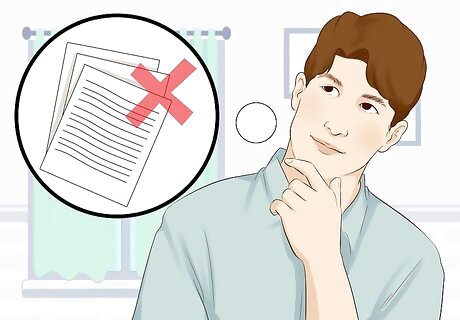
Determine the reason for your motion. Judges only do things for legal reasons. If you want the judge to quash something, you must find a valid legal reason why it would be unfair to use that thing against you, or make that request of you. Get help from an attorney or at a legal self-help center if you're confused about what legal reason you should use. For example, suppose the other side has sent you a subpoena ordering you to hand over every email you've ever written in the past 10 years. You could respond by filing a motion to quash on the grounds that the request is unreasonable and oppressive. You can also file a motion to quash service of process. If the proof of service document filed with the court is inaccurate, your motion to quash would argue that you were improperly served. If evidence is confidential, or was tampered with, you can file a motion to quash arguing that the judge should not allow that evidence to be admitted or used against you. In some courts this motion may be called a "motion to suppress" or a "motion to strike."
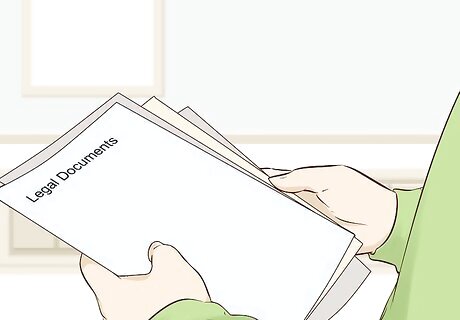
Gather related legal documents. Before you can draft your motion, you'll need copies of whatever it is you want the judge to quash. You'll also want copies of any other court documents you've been served with, as you might need to reference them. Court documents have a caption at the top of the first page that identifies the parties to the case, the case number, and the court that is hearing the case. You'll need all of this information for your motion.
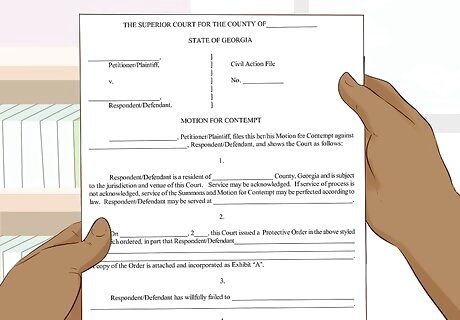
Search for forms. Many courts and legal aid societies have preprinted forms that you can fill out and use for your motion. These forms have been approved by the courts, comply with the formatting rules, and are available to you free of charge. Most courts have a generic motion form that you can use to draft a motion to quash if a more specific form isn't available. If you can't find the appropriate form, go to the court clerk's office and ask for sample motions from other court cases. You can use them as a guide. You may also find motion forms in form books, or online through commercial legal services. If you use one of these forms, make sure it has been approved for use in your state's courts.
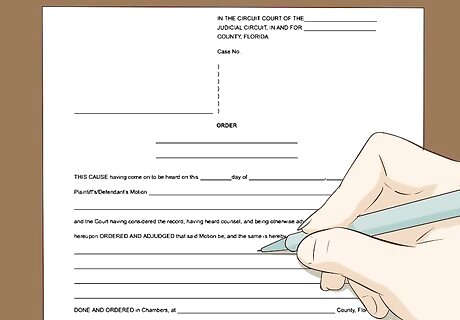
Write the body of your motion. A motion to quash typically is only two or three paragraph long. Start with a paragraph that briefly summarizes the basic facts of the case and identifies the subject of your motion. Then tell the judge exactly what you want them to do and why. A motion is persuasive writing. You want to convince the judge to agree with you and grant your motion. However, don't go overboard – appeals to emotion won't work. Stick to the facts and lay out your legal reasoning. Keep your writing clear and concise. If you reference any documents in your motion, such as a subpoena, make a copy of that document and attach it to the motion. Make a note after the name of the document to indicate that it is attached. For example, if you're attaching the subpoena you want the judge to quash, you would label it "Exhibit A" and put that in parentheses after you mention it in your motion. Proofread your motion carefully after you draft it. Typos and grammatical errors won't win you any favors with the judge. Read your motion out loud to make sure the language flows well and is easy to read.
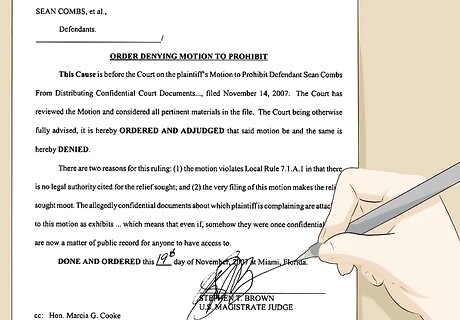
Sign your motion. Once you're satisfied with your motion, print it out and sign it using a blue or black ink pen. In some courts, you have to sign your motion in the presence of a notary public if you're not an attorney. When you sign your motion, you are affirming under the penalty of perjury that everything in your motion is true and accurate to the best of your knowledge. If you sign in the presence of a notary, bring a government-issued photo ID along with you so the notary can verify your identity.
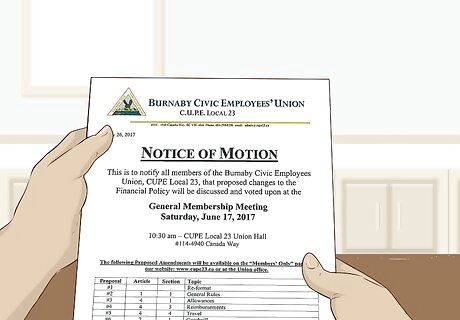
Prepare your Notice of Motion. The notice tells the other side when the court will hear your motion. This is a standard form available in most courts. You won't be able to fill it out completely until after you've filed your motion and know the date of the hearing. Complete as much of the notice as you can. Once you know the date of the hearing, you can hand write it in ink on the form. Don't sign the notice form until after you've entered the date of the hearing.
Filing and Serving Your Motion
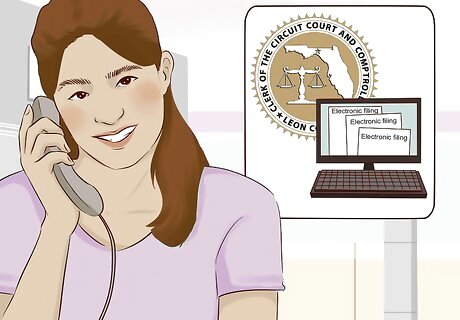
Find out if your court uses electronic filing. Federal courts, as well as many state courts, use electronic filing rather than paper filing. You can get this information by calling the office of the clerk of court, or by visiting the court's website. Typically, you'll have to create an account on the court's e-filing system before you can file your motion. These systems are free to use. If you don't have regular access to a computer, or have a disability that prevents you from e-filing, you may qualify for an exemption.
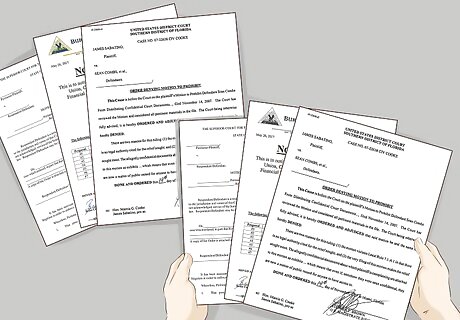
Make copies of your motion. Whether you e-file or take your motion to the courthouse in person, you'll need one copy for your own records and one copy for any other parties to the case. While you typically can get copies made in the clerk's office, they'll charge you a fee per page for doing so. If you attached any exhibits, such as a subpoena, copy those as well. If you have more than one exhibit, attach them in the same order as they were with the original motion. If you're filing your motion in person, take your original motion and all copies with you.
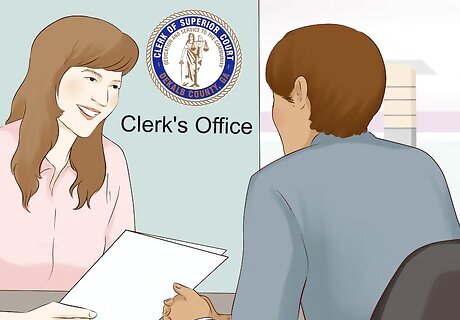
Take your motion to the clerk's office. To file your motion in person, go to the office of the clerk of the court where your case is being heard. If you've never been there before, look on your court documents to find out where it's located, or check the court's website. The clerk will stamp your original and copies. They'll keep the original for the court files and give the copies back to you.
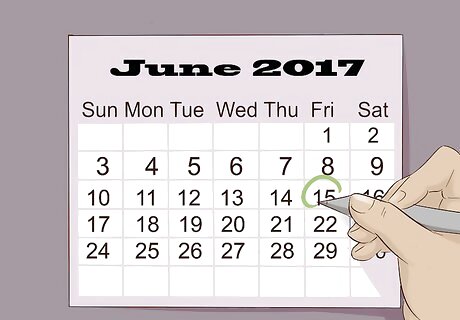
Select a date for your motion to be heard. The way a hearing date is chosen depends on the court and the individual judge's preference. In some courts, the clerk will simply assign a date, but typically, you have a choice. Some judges have a "motion day" in which they hear all motions ready to be heard. In that situation, you typically will be assigned the first available motion day after time for service and response by the other side. The time of your hearing usually is first thing in the morning. If the judge has morning and afternoon sessions, you may be able to choose which session – the time will still be the start of the session. This doesn't necessarily mean the judge will hear your motion at that exact time.
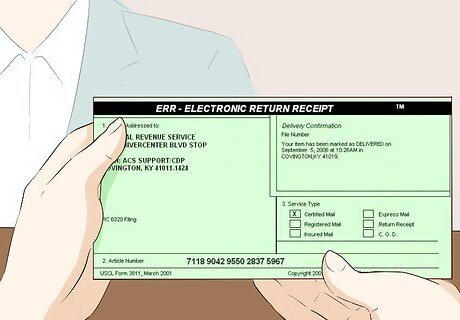
Have your motion served on the other parties to the case. Once your motion is filed, you have to deliver it to the other side using a legal service of process method. This proves to the court that the other side had notice of your motion and a chance to respond to it. The easiest way to serve a motion is to use certified mail with returned receipt requested. When you get the green card in the mail indicating that your motion was received, you use that to complete the proof of service document for the court. If the other side in your case is represented by an attorney, you must serve the attorney with the motion, not the other individual.
Arguing Your Motion

Gather documents and evidence to support your motion. At your hearing, you can show the judge any documents or other items that support your argument that a subpoena or other piece of evidence should be quashed. You can also have witnesses testify on your behalf. If you plan on having witnesses, you may need to let the court know in advance. A subpoena can be issued on your behalf if necessary, which compels the witness to be in court for your hearing. Needing a subpoena doesn't mean the witness is unwilling to testify on your behalf. People often need a subpoena to justify their absence from work or school, or to get out of another commitment.
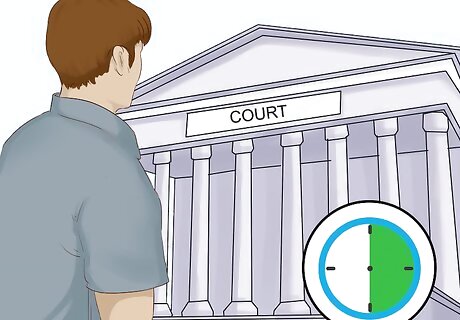
Arrive at least 30 minutes early for your hearing. Showing up early on the day of your hearing allows you time to go through courthouse security and find the right courtroom. Once you enter the courthouse, check the directory or go to the clerk's office to find out where your hearing will take place. Dress respectfully, as though you were going to a job interview or a church service. If you've brought papers with you, organize them neatly. Most courtrooms don't allow cell phones or other electronic devices. If you're concerned about items you normally carry with you, check with the clerk's office to find out what the court prohibits.
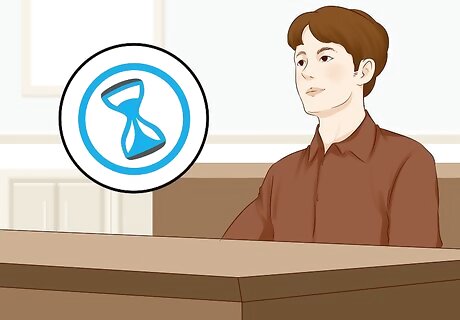
Wait in the gallery for the judge to call your motion. Judges typically hear motions for many cases on the same day. Take a seat on one of the benches in the gallery until your case is called. Then you may move up to the front of the courtroom. The judge may ask if you are ready to proceed. Answer "I'm ready, your honor." The judge will then motion you to come forward. Remain standing until the judge or a court officer tells you that you may sit.
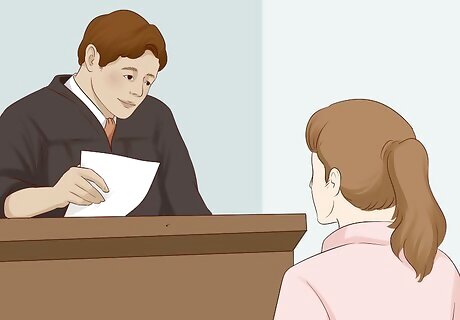
Present your case to the judge. Since it's your motion, you typically get to speak first. Start with a brief outline of the facts of your case, as you presented in your motion. Then explain to the judge what you want them to do and why. Speak calmly in a clear, loud voice. Stick to the facts and avoid emotional pleas, just as you did in your motion. If the judge asks you a question, pause and answer the question before you continue your argument. If you have evidence to present or witnesses to call, mention this to the judge. The judge will tell you how to proceed.
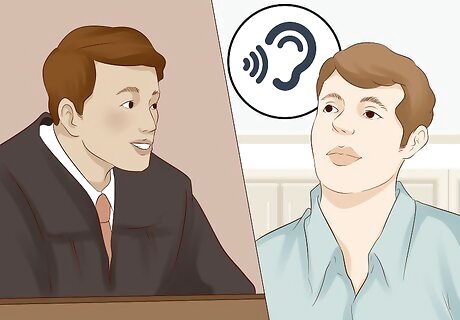
Listen to any response from the other side. If the other side in your case showed up for the hearing, they will also have a chance to talk to the judge. They will explain why they think the judge shouldn't grant your motion. While it's possible the other side won't show up, this is rare with motions to quash subpoenas. If the other side didn't care about the information, they wouldn't have gotten a subpoena in the first place. Be respectful while the other side is presenting their case. Don't interrupt or yell out at them. If they say something that you don't believe is allowed under court rules, say "objection" and wait for the judge to acknowledge you. Then you can explain to the judge why you think that statement isn't allowed.

Rebut the other side's arguments. After the other side has finished, most judges will give you the last word. You can use this time to restate your original arguments, or you can respond to particular statements made by the other side. While you're given the opportunity to speak, you don't have to speak if you have nothing more to add. Simply tell the judge that you "rest."
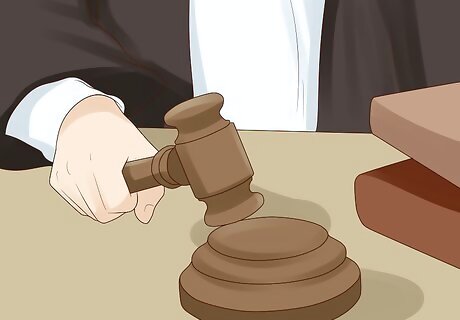
Receive the judge's decision. After hearing from both sides, the judge will decide whether to grant or deny your motion. It may take a few days before a written order is available from the clerk's office. It's a good idea to draft an order granting your motion. Most courts have forms for this person. Then if the judge grants your motion, all they have to do is sign the prepared order. If you disagree with the judge's decision, you have to wait until after a final decision is made in the case. If the case as a whole isn't decided in your favor, you can appeal. At that time, you can bring up the motion as a factor that unduly prejudiced you in the case.


















Comments
0 comment